Ciprian Adrian Corneanu
Survey on Emotional Body Gesture Recognition
Jan 23, 2018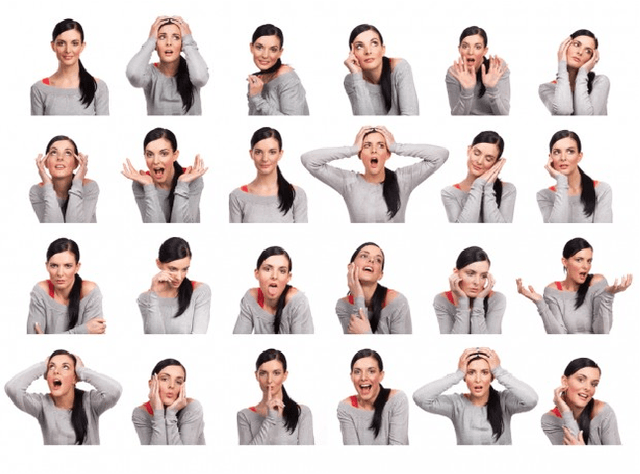
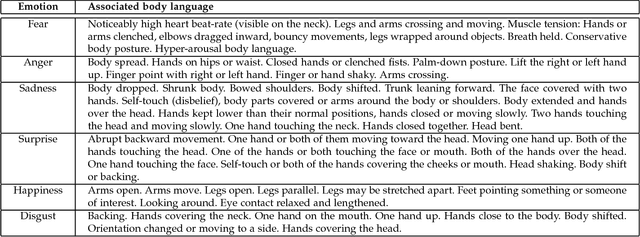
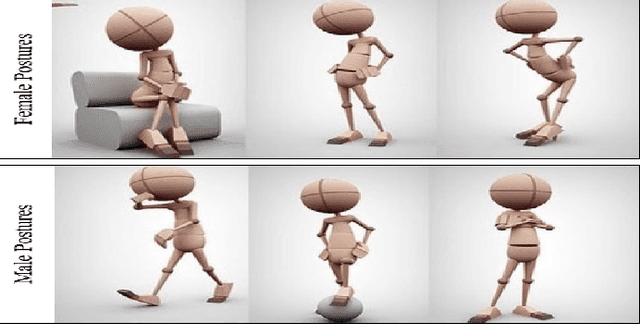

Abstract:Automatic emotion recognition has become a trending research topic in the past decade. While works based on facial expressions or speech abound, recognizing affect from body gestures remains a less explored topic. We present a new comprehensive survey hoping to boost research in the field. We first introduce emotional body gestures as a component of what is commonly known as "body language" and comment general aspects as gender differences and culture dependence. We then define a complete framework for automatic emotional body gesture recognition. We introduce person detection and comment static and dynamic body pose estimation methods both in RGB and 3D. We then comment the recent literature related to representation learning and emotion recognition from images of emotionally expressive gestures. We also discuss multi-modal approaches that combine speech or face with body gestures for improved emotion recognition. While pre-processing methodologies (e.g. human detection and pose estimation) are nowadays mature technologies fully developed for robust large scale analysis, we show that for emotion recognition the quantity of labelled data is scarce, there is no agreement on clearly defined output spaces and the representations are shallow and largely based on naive geometrical representations.
Automatic Recognition of Facial Displays of Unfelt Emotions
Jan 09, 2018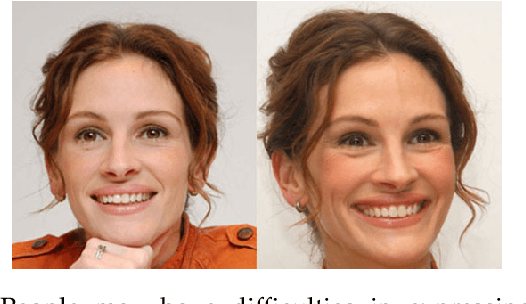
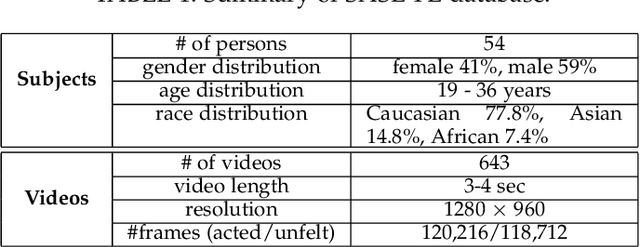
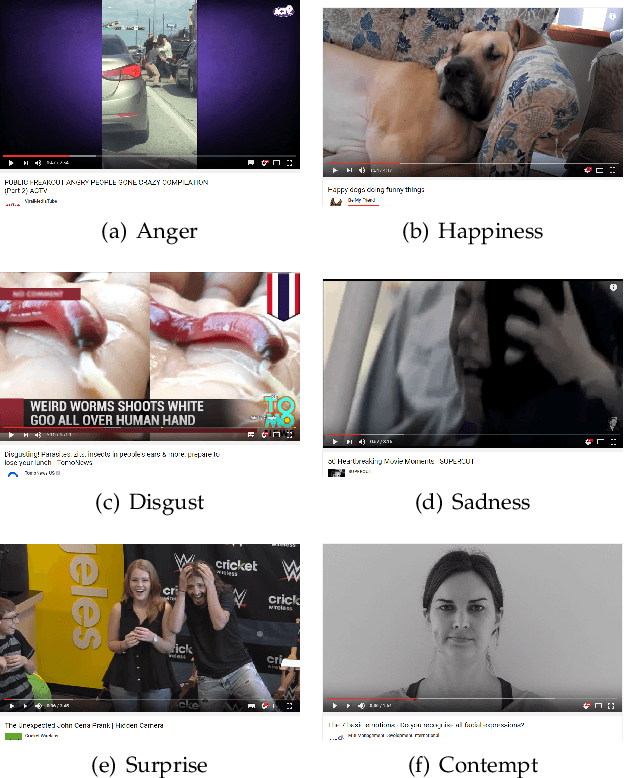
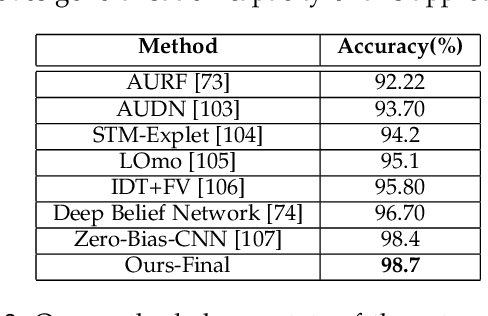
Abstract:Humans modify their facial expressions in order to communicate their internal states and sometimes to mislead observers regarding their true emotional states. Evidence in experimental psychology shows that discriminative facial responses are short and subtle. This suggests that such behavior would be easier to distinguish when captured in high resolution at an increased frame rate. We are proposing SASE-FE, the first dataset of facial expressions that are either congruent or incongruent with underlying emotion states. We show that overall the problem of recognizing whether facial movements are expressions of authentic emotions or not can be successfully addressed by learning spatio-temporal representations of the data. For this purpose, we propose a method that aggregates features along fiducial trajectories in a deeply learnt space. Performance of the proposed model shows that on average it is easier to distinguish among genuine facial expressions of emotion than among unfelt facial expressions of emotion and that certain emotion pairs such as contempt and disgust are more difficult to distinguish than the rest. Furthermore, the proposed methodology improves state of the art results on CK+ and OULU-CASIA datasets for video emotion recognition, and achieves competitive results when classifying facial action units on BP4D datase.
 Add to Chrome
Add to Chrome Add to Firefox
Add to Firefox Add to Edge
Add to Edge